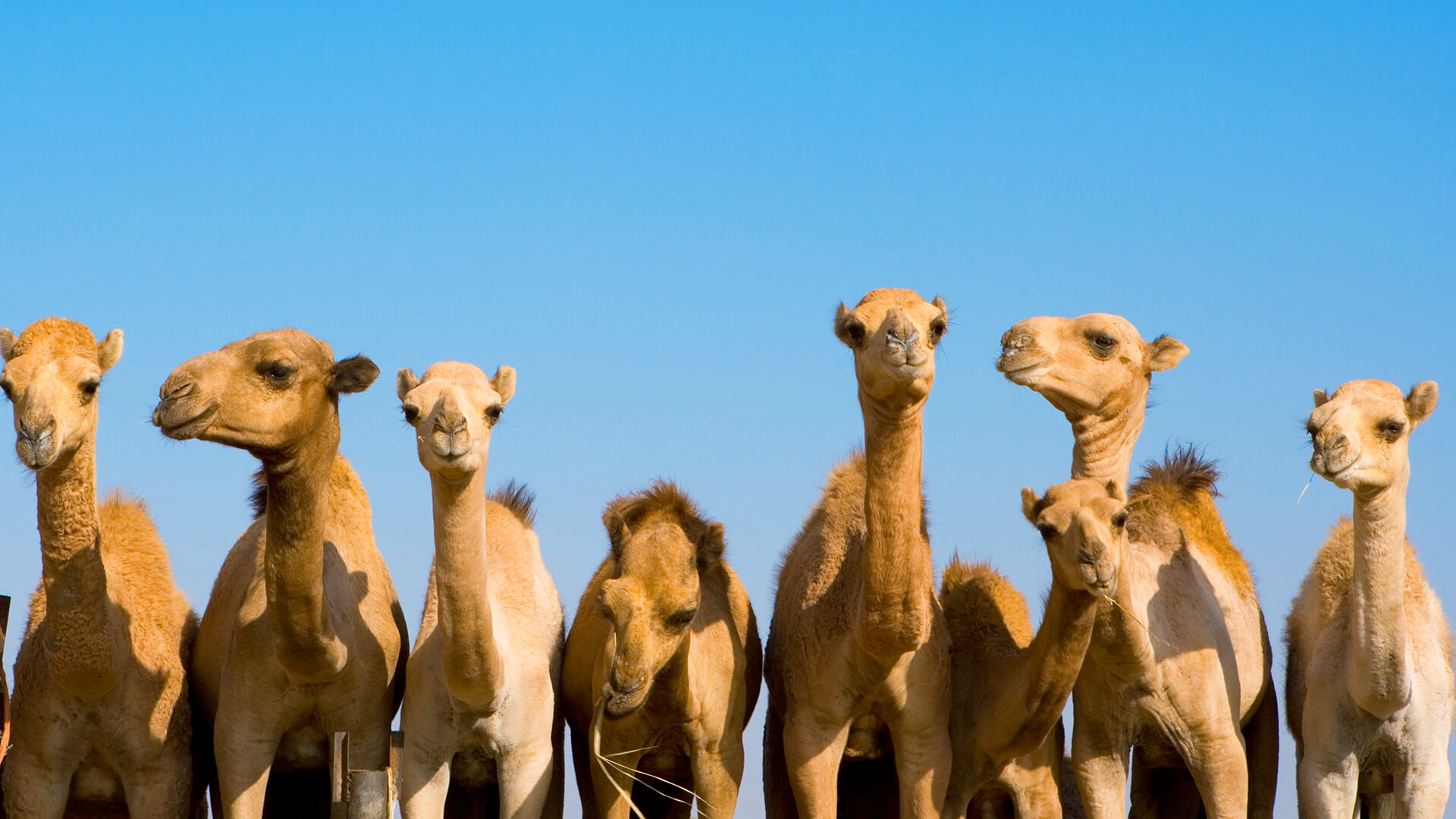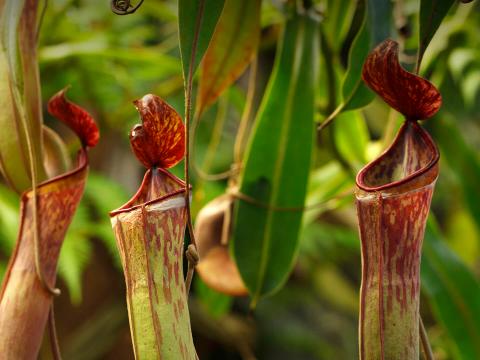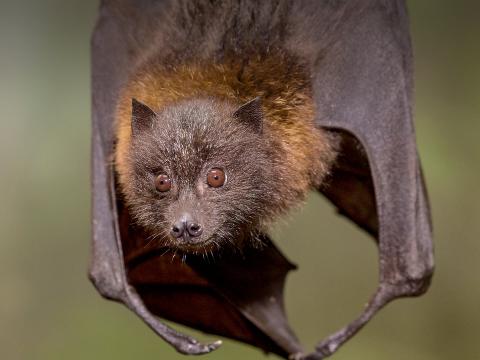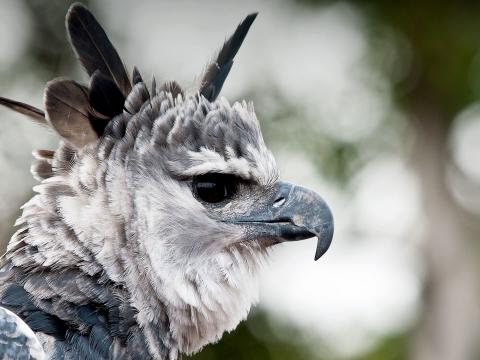Camel
- Class: Mammalia (Mammals)
- Order: Cetartiodactyla
- Family: Camelidae
- Genus: Camelus
- Species: bactrianus (Bactrian camel)
- Species: dromedarius (dromedary camel)
ABOUT
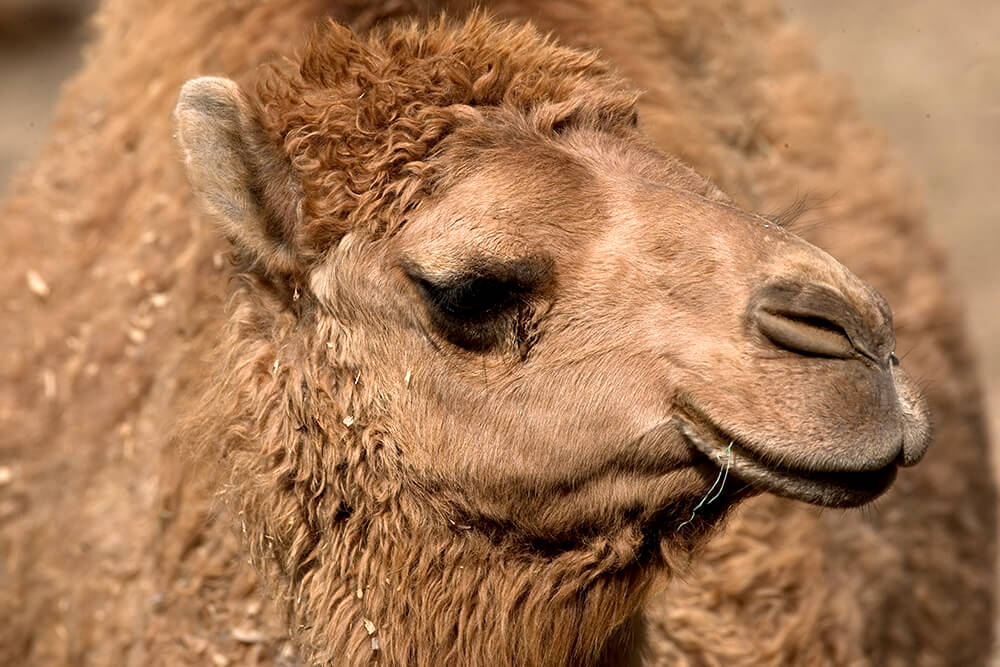
Ships of the desert. Camels were domesticated more than 3,000 years ago, and to this day, humans depend on them for transport across arid environments. They can easily carry an extra 200 pounds (90 kilograms) while walking 20 miles (32 kilometers) a day in the harsh desert. Camels can travel as fast as horses but can also endure legendary periods of time without food or water. Humans have used camels for their wool, milk, meat, leather, and even dung, which can be used for fuel.
The dromedary camel, also known as the Arabian camel, exists today only as a domesticated animal. About 90 percent of the world’s camels are dromedaries. There are two types of Bactrian camels: wild and domesticated. Wild Bactrian camels are much trimmer, with smaller humps and less hair, than domesticated Bactrian camels.
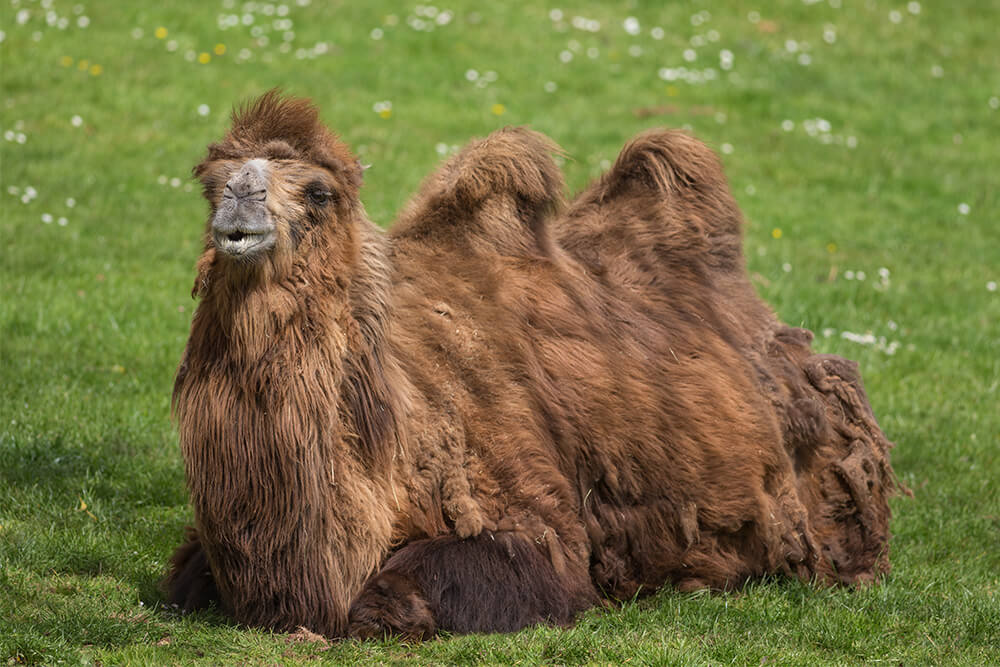
One hump or two? The dromedary camel has one hump and the Bactrian camel has two. What’s the easiest way to remember the names? Think of the capital letter D lying on its side with just one hump: D stands for dromedary. Now think of the capital letter B on its side with two humps: B for Bactrian! But what’s in those humps? They store fat, not water. The fat becomes an energy source for the camel.

The length of time a camel can survive on this stored energy depends on climate and its activity levels. The size of the hump can change, depending on the amount of food the camel eats. When food is scarce, the camel’s body uses the fat stored in the hump, causing the hump to lean over and droop.
A camel can go a week or more without water, and it can last for several months without food. It can survive a 40 percent weight loss and then drink up to 32 gallons (145 liters) of water in one drinking session!
The spitting image. Do camels really spit? Yes, and it’s most unpleasant. They aren’t actually spitting, though—it’s more like throwing up! They bring up the contents of their stomach, along with saliva, and project it out. This is meant to surprise, distract, or bother whatever the camel feels is threatening it. You can tell if a camel is about to spit: its cheeks fill up and bulge.
You’d think a large animal like a camel would be safe from predators, but it is known that Bactrian camels have been attacked at water holes by wolves.
HABITAT AND DIET
Extreme living. Bactrian camels, native to the Gobi Desert in China and the Bactrian steppes of Mongolia, grow a shaggy coat in the winter for protection from the freezing cold and shed the coat during the hot summer. These camels can survive a wide range of temperatures, from minus 20 degrees Fahrenheit (minus 29 degrees Celsius) to 120 degrees Fahrenheit (49 degrees Celsius)!
Domesticated dromedary camels are found throughout desert areas in North Africa and the Middle East. A feral population of dromedary camels lives in Australia. The camels were imported in the 19th century as pack animals and were used to cross the vast desert regions there.
Swirling desert sand can be a problem for most of us, but camels have special adaptations for the pesky stuff. A thin nictitating membrane on each eye, like a clear inner eyelid, protects the eyes from sandstorms while still letting in enough light for camels to see.
Double rows of extra-long eyelashes also help keep sand out of the eyes. And camels can close their nostrils to keep sand out of their nose, too! Their large, broad feet are heavily callused; they expand when stepped on and contract when lifted to simplify walking in sand or snow.
Camels are diurnal and spend their days eating. They are very clever at finding food in their harsh desert environment. Each half of the split upper lip moves independently, so camels can get near the ground for eating short grass. These tough but flexible lips can break off and eat vegetation such as thorns or salty plants; they even eat fish.
Camels are ruminants, like cows, and they regurgitate the food back up from their stomach to chew it again. When they do that, smelly gasses come up as well, making for some pretty potent breath!
At the San Diego Zoo and San Diego Zoo Safari Park, the camels eat Bermuda and Sudan hay and herbivore pellets.
FAMILY LIFE
Highly social, camels live in herds with a dominant adult male; males that have been chased out of the group form bachelor herds. They make many sounds, including moaning and groaning sounds, high-pitched bleats, loud bellows, and rumbling roars. Mothers and their newborns hum to each other.
A friendly way one camel may greet another is by blowing in its face. Various positions of the head, neck, ears, and tail have different meanings in camel society, too. For example, ears forward indicates alertness; the tail curled over the back is a sign of submission.
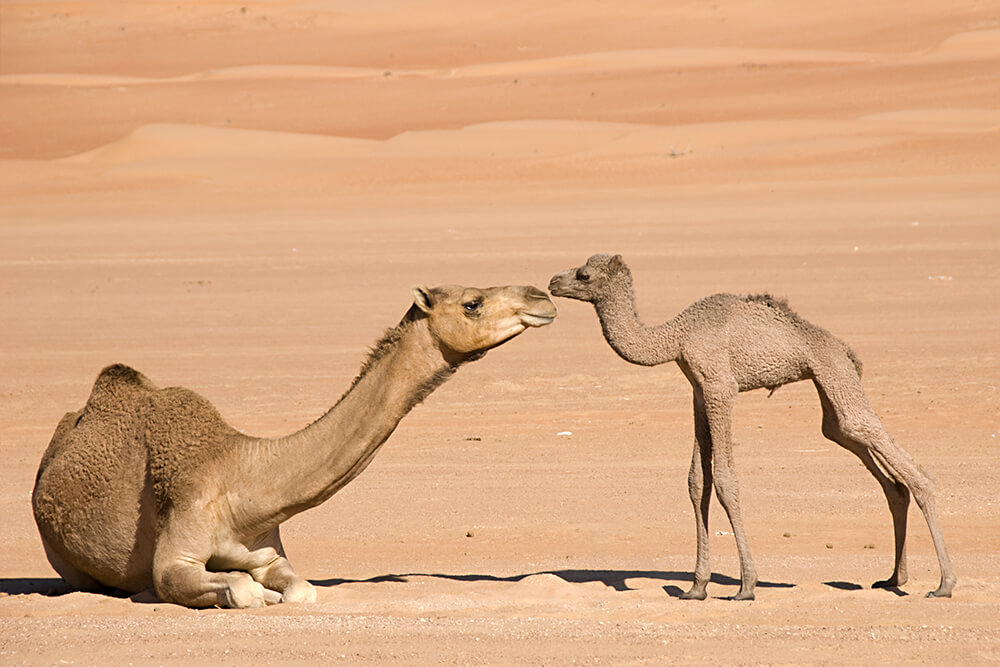
Baby humps. When she is about a give birth, an expectant mother removes herself from the herd and finds a private area covered with vegetation for her calving spot. After a gestation of 12 to 14 months, a newborn camel is able to walk beside the mother within half an hour. The calf has no humps but small peaks of hide, each topped with a tassel of curly hair to indicate where the humps will form.
Mother and young return to the herd in about two weeks. Camel calves nurse for 10 to 18 months, depending on whether it is a Bactrian or dromedary camel and the availability of food. They do not reach full adult size until about age seven.
CONSERVATION
Humans have depended on camels since ancient times. They were even brought to the US in the mid-1800s as a potential source of transportation across the West, as well as a replacement for beef cattle. Today, if the nomads of Africa’s Saharan region continue their traditional way of life, they will need the dromedary camels for milk, wool, and transport.
Bactrian camels, however, are at critical risk, facing a decline as they are hunted for sport or killed because they compete with domestic camels and livestock for grazing and watering spots. They are also hunted for their meat. Their habitat is also being taken over by illegal mining operations. There are currently about 650 Bactrian camels in China and about 450 in Mongolia. The Wild Camel Protection Foundation was established in 1997 and has set up a natural reserve in China for Bactrian camels.
By supporting San Diego Zoo Wildlife Alliance, you are our ally in saving and protecting wildlife worldwide.

